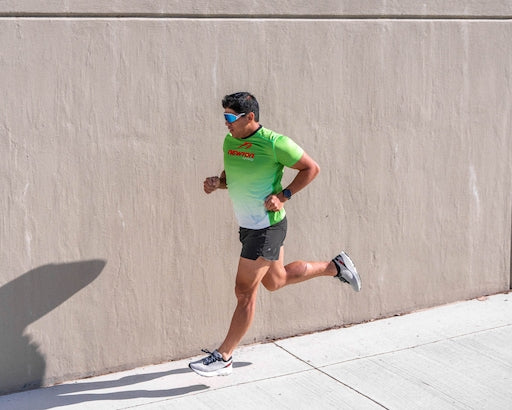Metatarsalgia
overcoming injury running form running science16 January 2012
Forefoot pain, also known as “Metatarsalgia,” is a condition indicated by pain and inflammation under the ball of the foot. This is increasingly prevalent in runners who are making a change to minimal footwear, barefoot running and Newton Running Shoes.
As with virtually all running injuries, forefoot pain is a result of doing too much, too fast, too soon. When people blame the shoes, consider whether they would have had the same thing happen running barefoot or in minimalist footwear? It’s a lot like saying “this helmet injured my head”, “this oven mitt burned my hand” or “these shorts tore my ham string.”
The bio-mechanical sensor plate in all Newton Shoes can lead people to believe the shoes are too hard and stress their feet. It actually works the other way around. The midsoles of regular running shoes are unnaturally soft (compared to the natural surfaces we evolved to run on), commonly leading to large, uneven depressions where the EVA foam collapses. Unlike Newton’s Action/Reaction technology, EVA never fully recovers, leaving an uneven surface under the foot.
The unfortunate result for many runners is misaligned metatarsals as the foot adapts to the soft surface and digs increasingly deeper holes into their shoes. Over years and decades it is common for people to end up with badly misaligned bones, like uneven keys on an old piano. Returning to a naturally firm surface like barefoot, minimal or Newton Shoes can be a painful experience as the bones realign, pulling on connective tissue and stressing the nerves.
Leaving the condition untreated can lead to other problems such as stress fractures of the metatarsals or Morton’s Morton’s Neuroma. As with most medical conditions, the cause should be removed (often too much too soon) and then treated. Once addresses, it is important to ensure good running form and appropriate running shoes, with a conservative amount of time to adapt.

